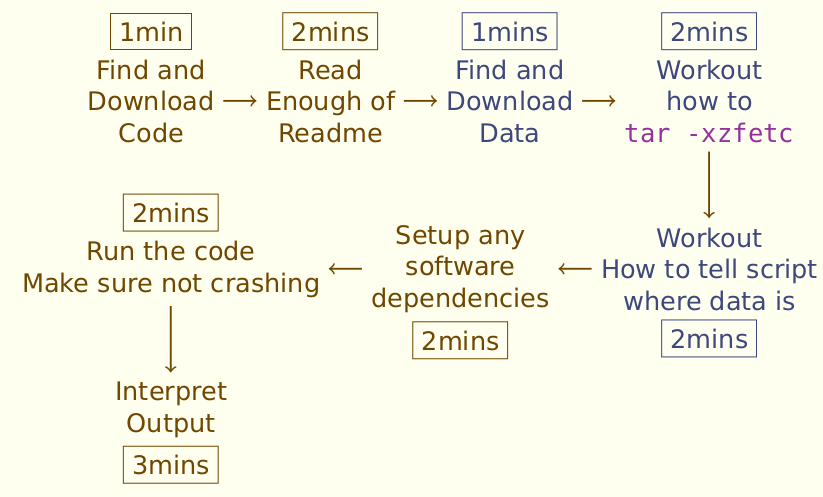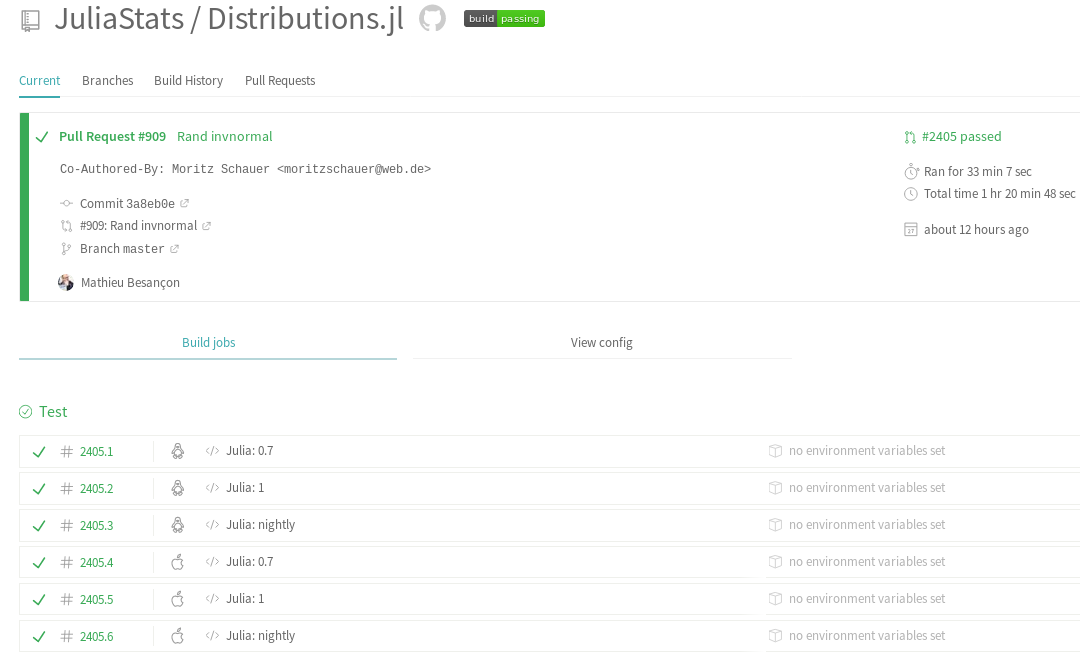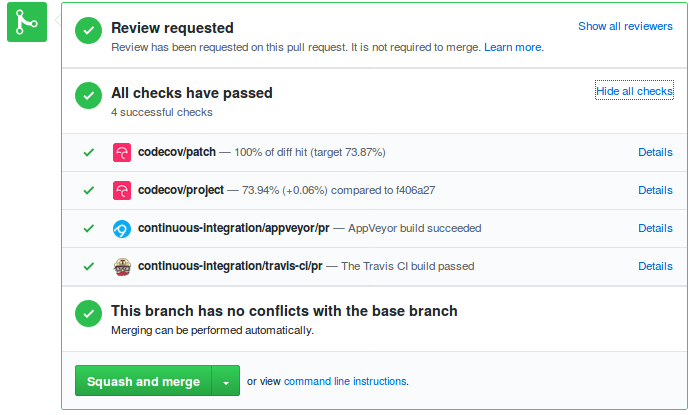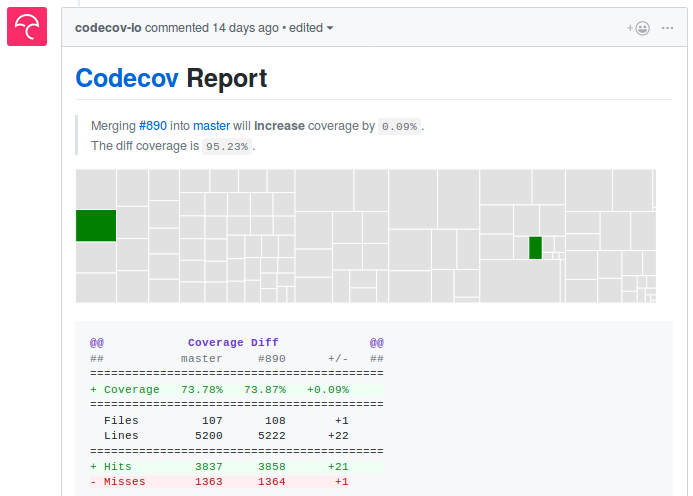Getting started with Julia for reproducible science¶
Mathieu Besançon
Polytechnique Montréal, INRIA & Centrale Lille
Logistics¶
Slides at https://matbesancon.github.io/slides/JuliaNantes/JuliaTools.html
Repository at https://github.com/matbesancon/JuliaNantesWorkshop
Lots of references & pointers, for the trip home.
Twitter for live-complaints: @matbesancon
Content¶
- Reproducibility, why?
- Getting started with Git
- Working alone
- Projects & environments
- Tests
- Publishing code
- Working with data
- Collaborating on code
- General workflow
- Demo & homework
Bonus:
- Unaesthetic diagrams
- Latest research in linear algebra
- HomeworkReproducibility: why should I care?¶
- Industrial software:
- Written once, used often, in (almost) all contexts
- Bugs are found (eventually) and fixed
- Academic software:
- Re-written a lot, used one final time
- Used in a static, long-lasting document (paper)
- Tested for one application? On how many data sets?
- First person reproducing results: you in a couple months
- Tools should buy a peace of mind, not additional burden
- Increasing expectations on reproducible software
- NeurIPS reproducibility checklist for all papers
- Requirements on reproducibility: not just by you, not just on your machine
5 levels of reproducibility defined in P. Vandewalle, J. Kovacevic and M. Vetterli, "Reproducible research in signal processing"
DOI: 10.1109/MSP.2009.932122
Meet Git: the time machine for computer files¶
Download¶
On Linux, git is probably installed, otherwise:
https://git-scm.com/downloads
Learn¶
- https://fr.atlassian.com/git
- https://guides.github.com/introduction/git-handbook
- https://openclassrooms.com/fr/courses/2342361-gerez-votre-code-avec-git-et-github
- https://openclassrooms.com/en/courses/5671626-manage-your-code-project-with-git-github
Try online¶
Working alone¶
- One project, isolated from the rest
- Build a library or produce results
$ tree
.
├── code
├── data
│ ├── data1.csv
│ └── data2.txt
├── results
│ ├── results.csv
│ └── img
│
└── paper
└── paper.tex
Why not a script?¶
- Upgrading dependencies -> did I break my code?
- Am I sure this code can be run anywhere?
- Article review after 6 months -> is it still fine?
Working in environments¶
Safely depending on libraries¶
Demo 2: Pkg tools¶
Generate project IdentityMatrices
Add dependencies
See Project.toml, Manifest.toml
All is in the Pkg documentation, go read it.
Project isolation¶
Launch Julia and activate your project:
$ julia --project=@.Launch, and then activate:
julia> ]
(v1.1) pkg> activate .
Get a project and set the required environment¶
julia> ]
(v1.1) pkg> activate .
(JuliaNantes) pkg> instantiate
If Manifest.toml provided $\Rightarrow$ same exact configuration as when the code was written.
Otherwise $\Rightarrow$ compatible configuration with Project.toml, creates a Manifest file.
Tests, the easy way¶
Research software moves fast, and breaks things.
Tests:
- Specify expected behavior
- Communicate usage
- Signal robustness
- Safeguard against your future self
- Put yourself in the user's shoes
Demo 3: writing tests¶
First tests for IdentityMatrices
Write code for IdentityMatrices
Test-specific dependencies
Personal tips¶
Cover corner cases:
@test_throwswith expected errorWhat happens with limit values?
@test_throws MethodError mean(["hello"]) @test isnan(mean(Float64[]))
Avoid too special structure in tests Example: input always integer.
Avoid trivial "comfort" tests.
Example: copying a function implementation to test it:
@test mean(x) == sum(x) / length(x)
Unit VS Property test¶
- Unit: test a given evaluation / data point
- Property tests: test a property of the result for given input
Examples: positivity, idempotency, existence for any input, order conservation, ...
Two steps:
- generate random input
- test property
Publishing code¶
Why?¶
An article about computational science in a scientific publication is not the scholarship itself, it is merely advertising of the scholarship. The actual scholarship is the complete software development environment and the com-plete set of instructions which genemted the figures.
Buckheit and Donoho, 1995, WaveLab and Reproducible Research
Showcase your work, reference it in your paper.
Better something out now than some day a "perfect" library.
How?¶
- Git platform (GitHub, Bitbucket, Gitlab)
- Zenodo: DOI provider and archive
- Figshare: citable archive for data
- HAL Archive ouverte
A standard?¶
Parts of the Julia community moving towards CITATION.bib
What about data?¶
- Do not track massive data sets with git
- Then how?

Source: Lyndon White, DataDeps.jl, JuliaCon2018 https://doi.org/10.6084/m9.figshare.6949145.v1
DataDeps.jl¶
- Describe once how to get the data, parse preprocess
- Data gets cached, no 2nd download if available
Go check it: https://github.com/oxinabox/DataDeps.jl
Collaborating on code and research¶
Why?
- Using projects and getting a valuable experience to report
- Use-case not covered (yet)
- Somebody noticed your work online and wants to help
- Great opportunity for unexpected research projects
More info on https://guides.github.com/introduction/flow
Demo 4: Contributing somewhere¶
Find a project to contribute to
- github.com/JuliaStats/Distributions.jl
- github.com/JuliaGraphs/LightGraphs.jl
- github.com/JuliaOpt/MathOptInterface.jl
- github.com/JuliaOpt/JuMP.jl
Fork
Develop locally
Commit & push to fork
Pull request
Continuous Integration¶
This works... on my machine.
What if I could check it on a clean computer, without my setup?

Checking for every change (Pull Request)¶

Reading more¶
Mathieu Tanneau's tutorial on coding for research: https://github.com/mtanneau/tutorial_airo
Jane Herriman, How to get started with Julia 1.0's package manager: https://www.youtube.com/watch?v=76KL8aSz0Sg
Read the documentation https://docs.julialang.org/en/v1/stdlib/Pkg/index.html
